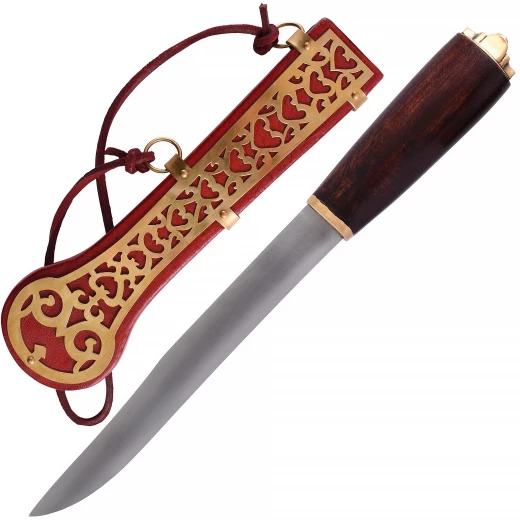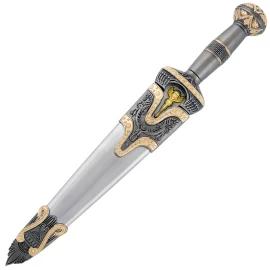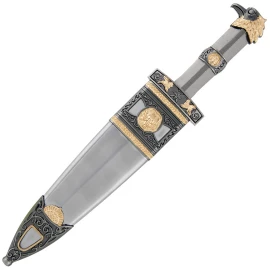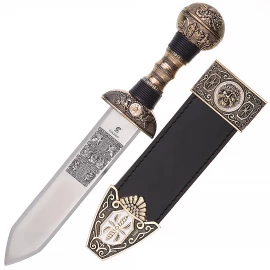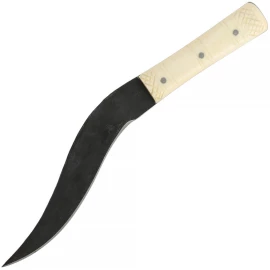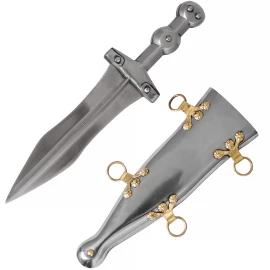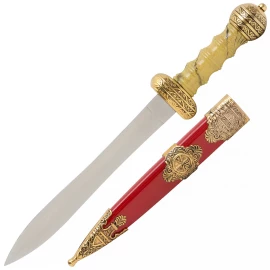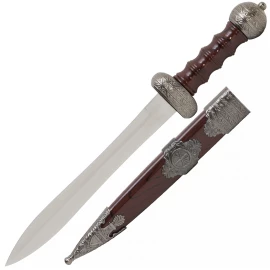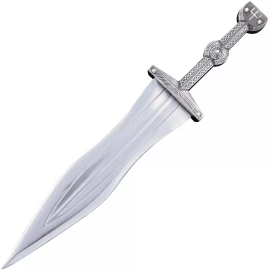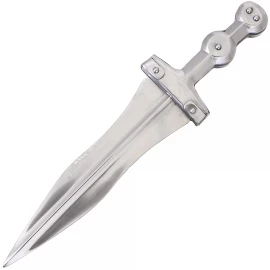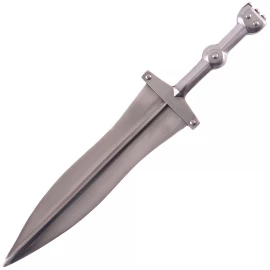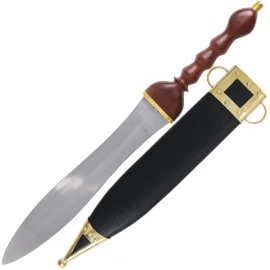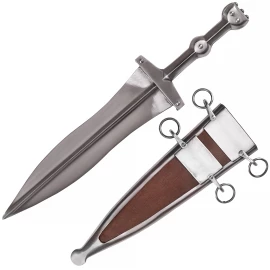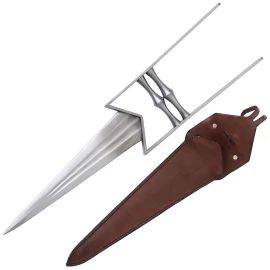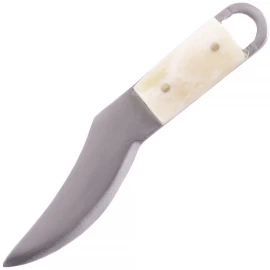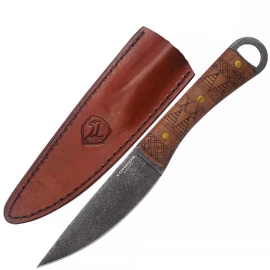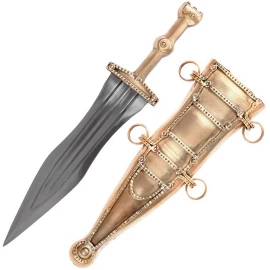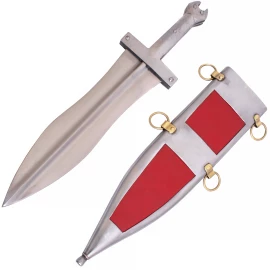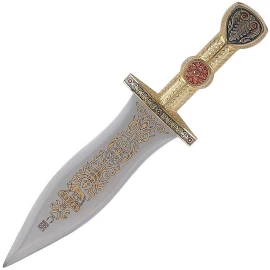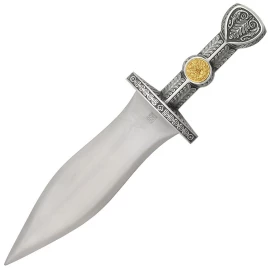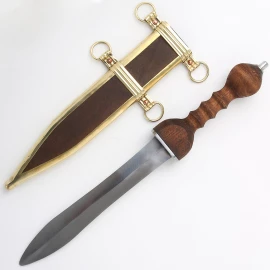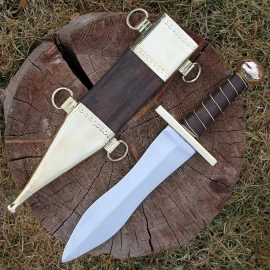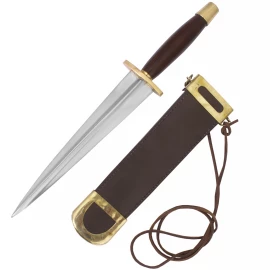Roman Dura-Europos Dagger with Scabbard, 3rd Century AD
Dura-Europos (also Doura-Europos or Dura-Europus) was a fortress city originally founded in 303 BC on the bank of the Euphrates River (in what is now known as Syria) and captured by the Romans in 165 AD. Its geographical location at the crossroad of different empires allowed for a broad mingling of cultures and traditions. It remained in Roman hands for almost a century before it was conquered by the Persian Sassanids in 256-257 AD. After its conquest and the deportation of its entire population, the city was abandoned and eventually completely disappeared under layers of sand. Rediscovered by chance in the 1920's, it became an incredibly important archaeological site from which a plethora of finds, protected by the desert's sands for centuries, have been unearthed over the years – from buildings to frescoes, to various artefacts and even human remains of Sasanian and Roman soldiers. More information...
Notify me when the item is in stock.
We will inform you as soon as we stock up.
Roman Dura-Europos Dagger with Scabbard, 3rd Century AD
The late Roman dagger we offer here is based upon fragments of decorative metal scabbard plates found during excavations in Dura Europos (1928-1937) and in Budapest, Hungary. The observe side of the red wood-and-leather sheath is adorned with a brass fretwork / open-work panel known as a the kenbeschlag – a specific German term adopted into the English terminology. Although only about 200 examples have been recorded to date, findings suggest that this type of scabbard fittings and the curious spatulate (spoon-shaped) end were established features of late 2nd to 4th c. Roman knife sheaths. The scabbard is also equipped with two brass carrying rings and a leather cord. Finds of other the kenbeschläge seem to indicate that such scabbards were suspended from the belt by a cord and worn horizontally, with the unusual end acting as a counterbalance to the dagger's grip.
As the Dura dagger itself no longer survives, this reconstruction is modelled after blade and grip parts of preserved or partially preserved 3rd c. examples (found among others in Hungary, Denmark and Switzerland). Unlike the broad, double-edged blade of the early Roman imperial pugio, this blade is much narrower and has a curved, single edge and a slightly angled back. It is made of EN45 spring steel and is not sharpened. The grip is made of wood, the collar and butt cap of brass. Interestingly, the butt cap shows some similarities to the pommels used on some later seaxes of the Migration Period and Viking Age.
Please note that this Roman dagger is not a battle-ready weapon. It is designed as a collector's or decoration/display piece and is not suited for combat re-enactment. Besides its quality as a collectible, it is also perfectly suited as a prop, e.g. to complete your costume. This finely crafted piece of Roman history will make your portrayal of a proud legionary of the late Roman Empire look even more authentic.
- Material: EN45 spring steel blade (high carbon steel, not stainless), wooden grip, cast brass collar and pommel
- Overall length: approx. 31.5cm
- Blade length: approx. 19.5cm
- Handle length: approx. 12cm
- Blade thickness: approx. 4mm / 3mm (cutting edges approx. 1mm)
- Max. blade width: approx. 2.2cm
- Incl. wooden sheath with red leather cover and brass fittings and suspension rings
- Weight without sheath: approx. 207 g
- Weight with scabbard: approx. 342 g
- Specs may slightly vary from piece to piece.
The steel used here is not rust-proof and might show slight surface tarnishing in places. We recommend you to maintain the blade on a regular basis, for example using Ballistol Universal Oil, which is ideally suited for steel care.
We are here for you


